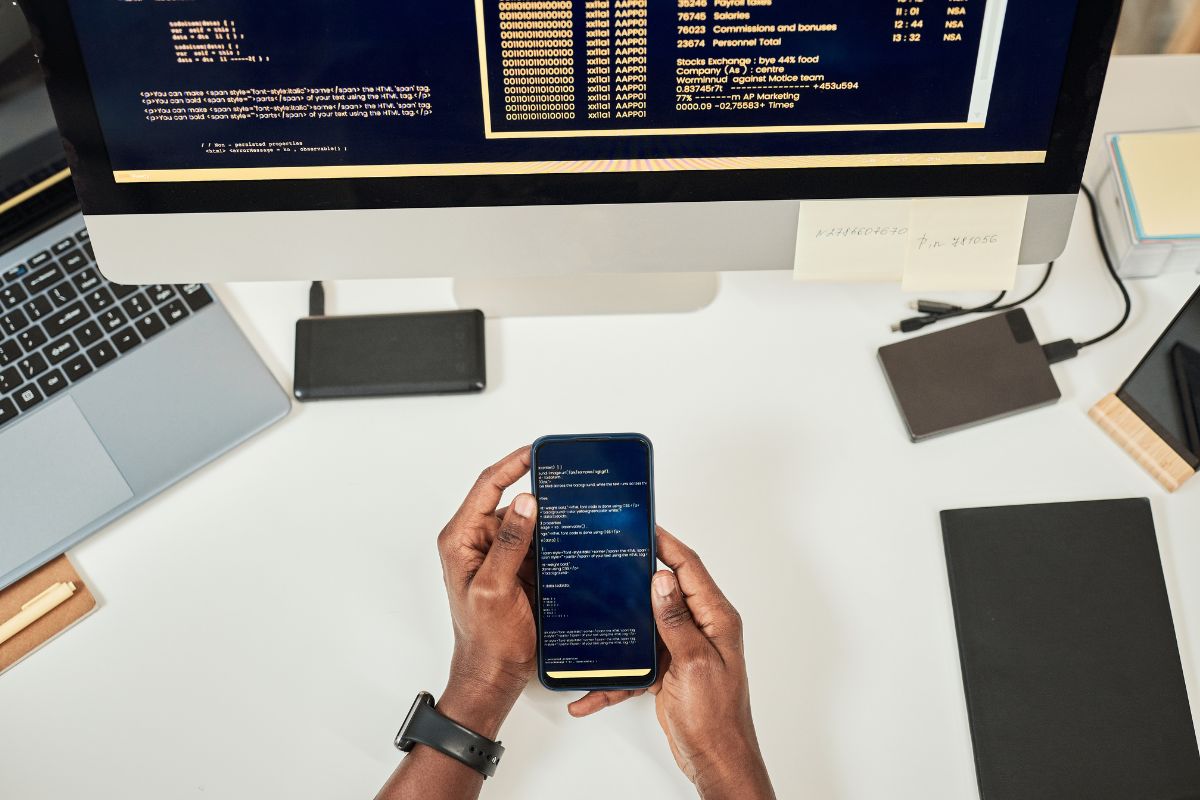Our modern world is global; mobile applications have quietly become a part of our lives. Undoubtedly, apps have revolutionized our interfaces with technology, from facilitating communication and entertainment to boosting efficiency and streamlining trade. The developers have, however, started looking beyond their borders as they aspire to unlock the potential offered by the world user base that the growing app market presents. Pursuing wider reach shows the importance of app localization or tailoring your app for different regions, languages, and cultures so that others can understand what you are saying.
Developers realize that as mobile application demand crosses borders, they must address issues arising from linguistic and cultural aspects. It would be achieved through app localization, which is the key to success in any foreign market. As part of this process, establishing a comprehensive mobile device lab becomes imperative to ensure thorough testing and seamless adaptation to various devices. This blog discusses the significance of localization testing for an app to go global by discussing how to translate user interfaces, content, and functionalities for people worldwide. Let’s dive into the intricacies of localization testing and see what it means for the mobile apps’ popularity and acceptance worldwide.
Exploring the Depths of App Localization
App localization reveals broad practices far beyond mere translation. This complex procedure entails customizing an app to suit various end-users’ different language, cultural, and functional demands. It goes beyond linguistic adaptation by customizing content, design, and overall usability into a fluent and fascinating interface for users in different areas.
If an app is successfully localized, it should resonate with the target audience and include their preferences, cultural peculiarities, and subtle language. App localization turns an application into a tailor-made product specifically crafted to meet international customers’ distinct demands and preferences.
The Significance of App Localization
Localization is critical to any digital application that is globally oriented. What makes it important is its ability to communicate and influence people of different languages and cultures at a deeper level. Instead of copying their products to diverse markets, developers adapt them to linguistic, cultural, and functional idiosyncrasies in each market. It enhances user engagement with the product and increases user satisfaction with its success.
Because a user using an application can be in a different location and culture, the one-size-fitting method must be narrower for such an application. This limitation is addressed by app localization, whereby user’s experiences are tailored to suit different demographic expectations. It creates an impression of belonging and the understanding that the app is not just a tool but has been designed with the users’ preferences and cultural sensitivity kept in mind
In addition, app localization covers more than simple translations and extends to design, content, and functionality. This precise adjustment will ensure that the app will be an inseparable part of the user’s daily life, being more than just an application.
Let’s discuss how app localization is impacting the global markets:
1. Expanding Reach With App Localization:
App localization is not only about language; it is a key to global markets. You are making the app friendly to millions of people and opening yourself up to new and untapped audiences by tailoring your app according to varied linguistic backgrounds. It is a strategic move that works across linguistic boundaries and transforms your app into a global device that speaks to your international audience. Therefore, it is not just an upgrade but a passport to connect with users globally and access exciting doors.
2. Gaining the Edge through App Localization:
As the secret weapon, localization is something that you should have amid app market competition. Of course, translation is not enough – it is also about localizing your app into different languages and ensuring it is culturally adapted. Position your application as a preferred option that stands out among others limited to one language. When users are given options, they tend to pick a worded app that sounds as literal as possible. Thus, app localization isn’t a mere alternative in the competitive arena but your ace to outcompete and attract users for your app over the competitors.
3. Boosting Downloads and Revenue:
Locally-focused mobile applications surpass competitors in downloads and revenue. Research shows that people are more likely to download and pay for an application that speaks in their mother tongue. It is not just about language, but it is about establishing a bond that is meaningful and relatable to users. Therefore, if you want more downloads and revenue in the app’s markets, app localization is not just fashionable but also a technique to succeed in the competition markets.
4. Elevating User Experience:
The key to user comfort lies in speaking their language—literally. When users can interact with an app in their native language, it goes beyond convenience; it fosters a sense of comfort and engagement. The result? Elevated user satisfaction, glowing reviews, and a noticeable boost in user retention. App localization isn’t just about adapting the language; it’s about crafting a tailor-made experience for each user. So, if you’re aiming for an app that leaves a lasting impression, embracing localization isn’t just an enhancement—it’s the pathway to a user-centric journey with unparalleled satisfaction.
The Process of App Localization
App localization is a multifaceted undertaking that encompasses several crucial steps to ensure a seamless user experience across diverse markets:
● In-Depth Market Research
For successful app localization, in-depth market research is crucial. Properly determine what market you are focusing on and study it very well. Examine what people want, language quirks, and cultural complexities. Knowledge about the competitive landscape and potential issues associated with localization is crucial. Track the trends in the markets while paying attention to the specific behavior of consumers in each defined region.
● Content Extraction:
That is why we start with meticulous content extraction of every possible word, picture, and multimedia part of the application. Adhere to a systematic extraction procedure to prevent overlooking any item to pave the way towards an encompassing localization effort.
● Localization & Translation:
Besides translation, however, it means adapting content into local cultural nuances, date and number formats, and regional units. Other visual elements like the color and images are changed to suit local tastes. Go beyond literal conversion by trying to understand and express the substance of the content into cultural frameworks relevant to the intended audience.
● Fixing Bugs & Testing:
Thorough testing is indispensable to discover and remedy all localization difficulties. Properly fitting all parts and detecting language-specific bugs for smooth user experience in supported languages. Apply a strong testing approach that finds language-related bugs and differences in visual elements and general interface.
Developers often use tools like LambdaTest to ensure comprehensive testing across various devices, browsers, and operating systems for an effective automation testing process. LambdaTest is an AI-enabled test orchestration and execution platform that allows developers to test their applications on cloud infrastructure in real time, ensuring compatibility and functionality across diverse environments.
● Ensure User Testing:
Ensure that some target audience representatives actively participate in user testing sessions. Seek feedback to assess user experience and amend the app design in compliance with users’ local tastes and preferences. User testing is not only about functionality but rather serves as an opportunity to enhance the app’s UI and user journey through feedback from a wide spectrum of users.
● App Store Listing Optimization (ASO):
Take localization to a whole new level by updating the app store listing, keywords, and description. It increases visibility and global availability through numerous app stores across the globe. Tune your app store presence to not just speak in the language of users in a particular area but also in a manner understandable to these people, taking into account their behavioral peculiarities and search behavior preferences.
Overcoming the Complexities of App Localization.
App localization is a complex undertaking with unforeseen hurdles, which entail cautious deliberation and wise solutions. Here are key hurdles to be mindful of:
1. Navigating Cultural Nuances in App Localization: Beyond Translation
In addition to simple translation, the elaborate cultural adaptation process is important. For example, in some cultures, images, colors, symbols, and phrases may produce confusion, offensiveness, or irrelevance. It requires a careful approach to localization that will observe some of the individual countries’ cultural nuances and sensitivities. Aligning content to fit in with local cultures reduces mistakes and increases user involvement as it feels familiar.
2. Mastering Language Diversity: Adapting Layouts to Varied Structures
It is a notable challenge associated with the diversity of language structures and writing systems. Different verbosity and character sets may result in text expansion/contraction, which changes the application flow. The app needs to be gracefully adjusted as per the linguistic variations. Developers should do this skillfully. Design and coding involve close attention to details because of language diversity. Therefore, users can navigate through the website irrespective of the language complexity.
3. Precision in Translation: Unraveling Contextual Complexity
Much of what people speak is context-dependent, so words and phrases often carry multiple meanings depending on the setting. As much as the apps need to be simple, thoroughly comprehending their contents is mandatory. Translators should be good at interpreting context to give the desired message precisely in the target language. The in-depth exploration of the context determines the accuracy of a translation. Thus, the original message’s intricate shades of meanings and innuendos should be adequately brought to light.
4. Bridging Linguistic Gaps: Finding Equivalents in Ambiguous Terrain
Translators must often use tact to discover corresponding words in other languages that maintain the same meanings and purpose as those not directly equivalent to certain terms/expressions in the source language. The art of translation involves the translator bridging the linguistic gap with precision for users despite language disparities.
5. Coding for Global Readiness: Overcoming String Constraints
Unlike typical apps that utilize hard-coded strings and make it difficult to update or replace text during localization. Developers should utilize string resource files and make room for growth in text size so that the system accommodates a wide variety of languages. App’s development strategy should be futuristic, considering flexible coding frameworks to ease the translation process of the end product.
Conclusion
Localizing an app is critical to accessing international markets and building relationships with different consumers. It is more than a simple translation by including culture adaptation and improvement of usability. Downloads and revenue are also enhanced, and users’ satisfaction and loyalty are increased through the localization of an app.
Do your due diligence in market research, work with experienced translators, and conduct user testing and feedback when app localization. With app localization, you are starting on a good course towards an app that can be widely successful worldwide and will provide a better and more inclusive experience for your users.
Besides the monetary advantages of added downloads, revenue, user satisfaction, and loyalty, app localization helps build a cross-border community associated with that product. Diversity acceptance and appreciation of specific markets enable you to enlarge the target audience and show your openness toward all people. Always bear in mind that it is beyond numbers; how an app succeeds globally is about touching different human hearts. Therefore, treat localization in your company not only as a business strategy but also as an opportunity to build a bridge between different cultures and improve the overall user experience.












